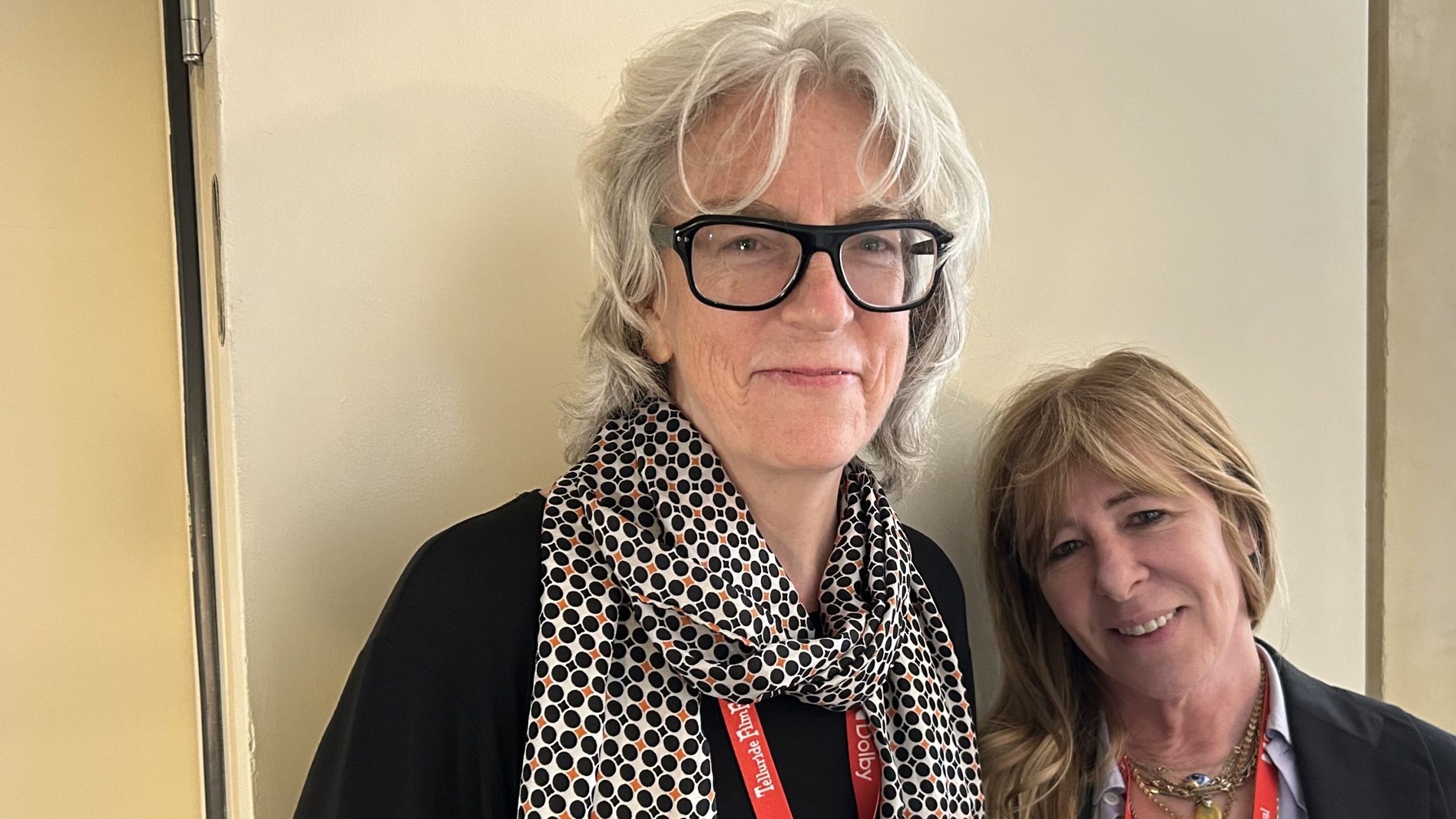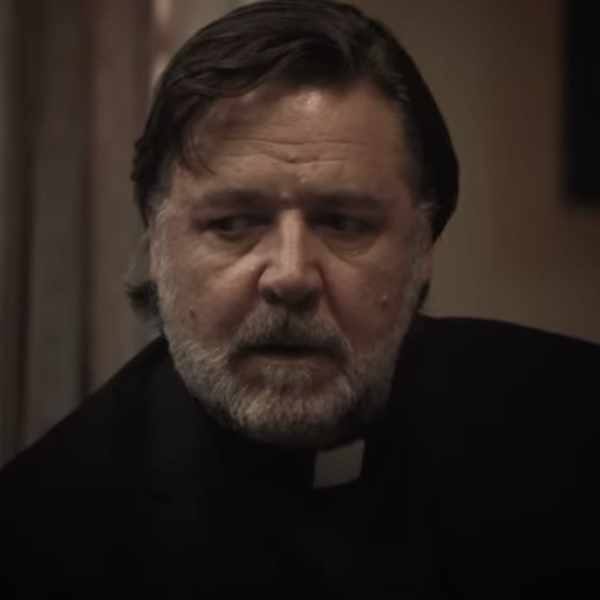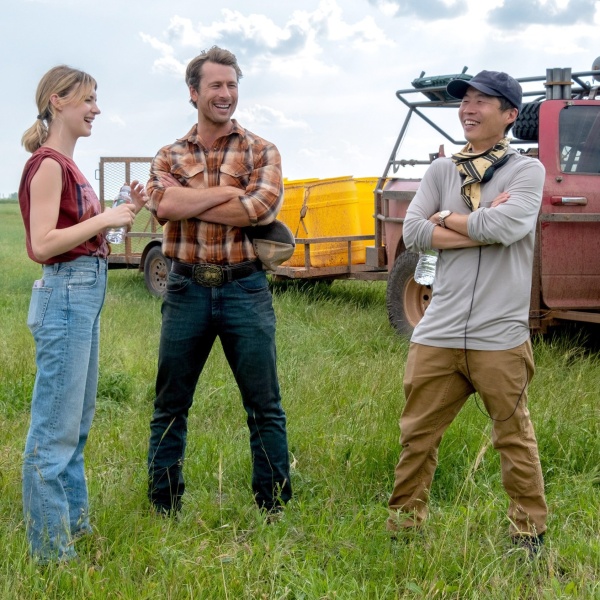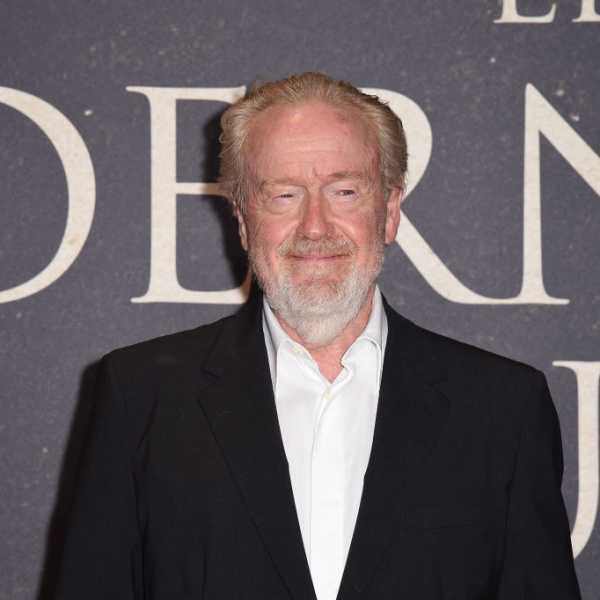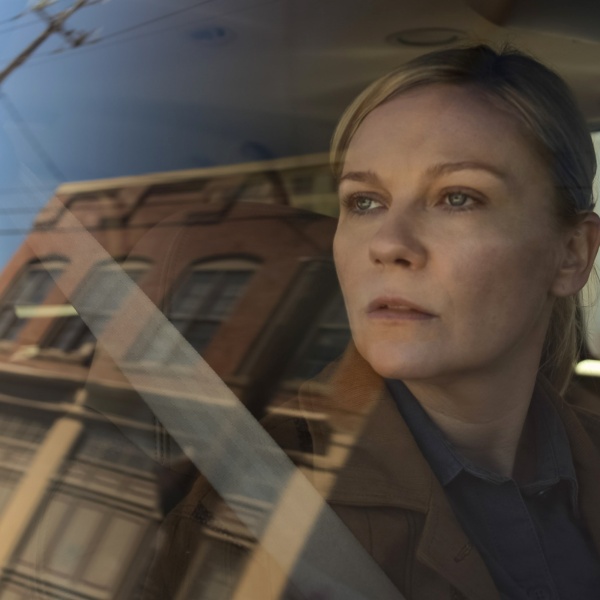“Nickel Boys” (Amazon/MGM/Orion, October 25), which opens the New York Film Festival on September 27, wouldn’t exist without producers Dede Gardner (Plan B) and Joslyn Barnes (Louverture Films). Both women boast enviable track records of finding, backing, and promoting rising talent, along with Gardner’s Plan B partner Jeremy Kleiner, who produced with her the Oscar-winners “Moonlight” and “12 Years a Slave,” as well as Best Picture nominees “The Tree of Life,” “The Big Short,” “Selma,” “Vice,” and “Women Talking.”
Barnes is known in the documentary space for producing Oscar nominees “Strong Island” (Yance Ford) and “Hale County This Morning, This Evening,” her first collaboration with Brown professor and photographer RaMell Ross. Barnes was finishing “Strong Island” when Ross showed her eight minutes of his project; she resisted at first but eventually became intensely involved in the shoot, archives, and the final edit. Ross sees the world differently than most filmmakers; his rare visual gift wowed audiences and Academy voters alike.
Gardner intuited the potential for Ross to direct the film adaptation of “Nickel Boys,” Colson Whitehead’s Pulitzer Prize-winning novel, which many in Hollywood deemed such a reform school horror (inspired by Florida’s notoriously abusive Dozier School for Boys) that it might be unfilmable. When Gardner approached Ross, he wanted Barnes to join him as producer and, eventually, co-writer. Together they created a point-of-view aesthetic that is beautiful, immersive, and emotionally powerful, with the movie unfolding through first-person perspective.
It makes sense that Gardner and Barnes would get along. That’s because, in many ways, they share the same heady — even pure — filmmaking approach in pursuit of truth and art. I spoke to them at the Telluride Film Festival, where “Nickel Boys” debuted to rave reviews. While the movie may be a challenge for mainstream moviegoers, the Academy should respond to this likely Best Picture Oscar contender.
This interview is edited for clarityand length.
Anne Thompson: Joslyn, how did you figure out your role on this film?
Joslyn Barnes: Dede and Jeremy came to us together: “We like partnership.” When we started to work on the treatment, RaMell asked me to join him, which I never would have proposed. I wrote also “Harvest,” the new Athina Rachel Tsangari. I’ve done a few things, but never thought of myself as a writer. Especially in documentary, you’re making the film so much in the edit room.
Dede Gardner: It’s a form of writing.

Joslyn Barnes: I thought, “OK, I’ll give it a go,” because we had this beautiful experience on “Hale County,” we had such a fantastic edit process. RaMell was continuously editing. He had hundreds and hundreds of hours of footage. We created this Think Tank around the edit: me, Rob Moss, and Maya Krinsky, who was a colleague of RaMell’s at Brown. We would meet with him every two weeks for three or four days, give him feedback. He would go off and continue editing. Then we would come back to Providence, sit together again. It was a process of asking provocative questions, not directing him at all, but thinking about it as a film in movements, as music. The uncanny thing about him was he could remember everything he shot. He thought about it musically. His visual memory is significant.
It’s interesting that you worked together producing “Nickel Boys,” because you are similar.
Dede Gardner: I felt lucky in that regard. You never know. We care deeply about reading. We care deeply about scholarship. We have a lot of experience, and we care about art. It actually was a pretty large surface area that felt like kinship, like this is someone who’s also spent years and years of their lives aspiring to protecting, harboring, and promoting unique and singular voices and heart/minds. The ambition from the beginning was high. So you’ve got to have a like-minded acrobat next to you.
Anne Thompson: The movie is daring and brave. How much did you worry about audience reaction? Did you ever consider a preview?
Dede Gardner: No. I don’t know that worry is the word. We didn’t preview “Women Talking.” We finished “Moonlight” before showing it to an audience. We’ve done this long enough, and we worked hard. And the edit had many iterations; it was challenging. We’ve just realized a final film that I’m so moved by every single time, and I have great confidence in it, and I hope it gets discovered. That’s your hope always. One of the thrills for me is it’s an entirely new cinematic voice. I can tell you, as a mother of two teenagers, that’s all they want, they’re just desperate for: “Please tell me a story in a way that I haven’t seen before.” They’re so besieged with regular imagery and regular delivery system, and regular A to B to C to D.
Anne Thompson: This is what you’ve always done, finding the right person to execute something in a new way. Why did you think of RaMell Ross for a challenging big feature?
Dede Gardner: The book demanded a particular human and a particular heart/mind. I felt, “If this gets expressed in a traditional, even well-done, but traditional narrative way, it won’t expand the aperture of what Colson does in the text.” I didn’t think it would take the leap that I felt the film had to do. We’d heard him give a speech when he won the Gotham, which set my hair on fire. He doesn’t look at the world the traditional way. He’s managed to insist on looking at it beyond the way we’re traditionally fed it. And that felt like an essential superpower or muscle that is rare. There’s use of POV in “Hale County” that I thought, “Oh, this is a clue.” But beyond that it felt like, “I think you’re the lightning rod.”
Joslyn Barnes: When Dede and Jeremy reached out, RaMell and I had this conversation. “This book is so perfect and economical.” And we thought, “Well, should we do this? It can be the worst thing ever. You can always have a bad film from a great book. It’s everybody’s nightmare.” And we thought, “OK, if we’re going to do this, and Dede shared this idea, we had to break it open in a different way.” It had to become a different animal and adapt the form. So this isn’t a novel. How can we create an opening and lean into RaMell’s cinematic and visual gifts, and write it in a way where we lean into his strengths?
We were also excited about the possibility of starting with the premise of love. Yes, we have these conceptual ideas, but how do we make sure that the audience feels it and it stays with them, and that their synapses keep firing afterwards? And that was so much about the emotion.
Anne Thompson: The movie draws you in, partly because it’s so different. You’ve never seen these images presented this way before. The opening sequence is gorgeous, as you introduce us to the language. Did you set rules?
Joslyn Barnes: The point of view was the main rule. And we had the aesthetic, which we talked about when we worked on the script. And we went through some drafts with Dede and Jeremy commenting on the use of adjacent and juxtaposed images.
Dede Gardner: Where does the archive go? What’s it in conversation with, how is it in conversation with other moments of archive, but also with the film’s narrative and what’s that contrapuntal symphony line?
Anne Thompson: Joslyn, archival is where you live.
Joslyn Barnes: I love archival. RaMell had certain specific things he wanted. And you can imagine, as an archival producer, trying to scroll through millions of images. When you’re looking at archival, your instinct is to think information, and so we always turn off the sound when we go through, especially long hours of archival, to find the gesture, to find the image, to find the thing that is unusual.
One of the other rules questions was also about onscreen brutality and how to convey the horror, and also acknowledge the horror and pain that these boys endured but not actually show it.
Anne Thompson: There’s a reference to a laundry machine.
Dede Gardner: It was the noise. it was to keep the sound of what’s happening in there away from the dormitory. So [Elwood] says early in the movie, “What is that? What is that?” And no one answers him.
Joslyn Barnes: And the other forms of abuse that they endured, with just the images of the guard above them. You understand. You don’t need somebody to say, “Hey, this is what happened to these guys.”
Anne Thompson: How did Amazon/MGM get involved?
Joslyn Barnes: It was Orion and MGM. And Amazon bought MGM while we were in the middle of the process. As a person who’s never made a studio film, it was a huge learning curve for me. Anonymous Content and David Levine were also supportive. We’ve done 60 films, and every one of them’s below $5 million, and it’s always been super independent. Some of the films we’ve made are challenging, but it comes from a place of respect for the audience, not, “Let’s aim over people’s heads because we’re so smart.” No, let’s try to make films pass through people, rather than over their heads. RaMell and I, when we finished the script: “OK, we wrote the best script we could possibly write. But no one will ever want to make this.”
Anne Thompson: What version of the script did you make?
Joslyn Barnes: The third version was the one we settled on.

Dede Gardner: It was in the first version, but we kept working on it. I remember feeling this removal of the inciting event. So you read it, and [Elwood] gets pulled out, the car gets pulled over, and the next thing you know, he’s talking to [Hattie, Aunjanue Ellis-Taylor], “I won’t be gone long.” And then the drive up to Nickel. By removing the actual arrest and the handcuffs or whatever, the quotidian bullshit of that horrible moment, then as a viewer, a reader, a recipient, I’m asked to understand this event inside of a whole system, as opposed to: “Oh, it only happens when this other thing happens.”
Anne Thompson: You feel how scared he is in a way that I’m not sure I’ve ever felt before.
Joslyn Barnes: Because of how it was done. The fear wasn’t about that one cop or that one pullover. The fear was: “I am a Black young man with my whole road ahead of me in a situation that I know is not going to turn out well, and my whole world has shattered.” So you experience the moment differently. And I found that so powerful.
Anne Thompson: You are messing with how people are accustomed to seeing cinema. Usually you’re focused on the face, the closeup.The great moment is the switcheroo. As you’re watching, you see small headshots of Elwood (Ethan Herisse)from the photo booth, or you see fleeting reflections of his face in a car window. And then you suddenly switch to Turner’s (Brandon Wilson) POV, and you see full-on Elwood.
Joslyn Barnes: The great thing about Ozu is he is always focused on the person listening, not the person talking. So often the case. It’s not the same in this film, obviously, but there is a way to bring the internal experience, not just so that you can legibly understand what the character is feeling, but so that you yourself are feeling it. It’s a different leap, especially around the historical imaging of Black folks and the cause and effect and all of these things that we’re trying to undo. That was important to us in thinking about, can we trust the audience? Will the audience be able to connect with this? Will they be able to put together a film that’s moving forward and backward at the same time?
Anne Thompson: RaMell Ross is engaged in a much bigger production than he’s ever experienced before. Were there challenges there?
Joslyn Barnes: Covid. The first day. It [was] like a slow-motion horror movie. The first shot was at the school. It was a beautiful morning. We had just done the safety talk, and the dew was on the grass, everything was set. And out of the corner of my eye, I see the guy from the Covid tent walking towards RaMell across the field. “Oh no.” I saw him tap him on the arm, chat with him, and literally pull him off the set. So we lost four days. And we had all fought so hard for the maximum number of days we could eke out with the budget. So we ended up trying to figure out how to deal with that.
Anne Thompson: A $23.2 million budget is not much for a period film.
Joslyn Barnes: 55 [in the] cast, it’s period, and there’s cars and animals, and significant crew, also an alligator. And the challenge with RaMell, introducing him to the process, and trying to create a place for him to feel calm so that he could focus on the creative element. This was the most important thing to try to do.
Dede Gardner: He gets worked up.

© 2024 Amazon Content Services LLC. All Rights Reserved.L. Kasimu Harris
Joslyn Barnes: He does. But this is all new. And also just even having people he’s working with. Actors? Yeah, it’s a huge challenge for someone who’s never worked with actors. He has worked with non- actors a lot, and he is such a good read and so good with young people because he’s coached and he’s a teacher.
Anne Thompson: The cinematographer Jomo Fray had to adopt a whole new way of shooting which was certainly not instinctive.
Joslyn Barnes: We have this good friend who’s an editor. He called me a couple weeks ago and he said, “I just have one question. Did you guys really shoot the whole thing in POV? Did you actually pull it off?” We did.
Next up: Besides producing such studio tentpoles as “Beetlejuice Beetlejuice,” “Wolfs,” “Mickey 17,” and “F1,” Plan B has been moving into documentaries. They showed two at Telluride: Brazilian filmmaker Petra Costa’s “Apocalypse in the Tropics,” a follow-up to her Oscar-nominated “The Edge of Democracy,” and Sam Rice-Edwards and Kevin Macdonald’s “One to One: John & Yoko.” Louverture is editing Debra Granik’s Participant series “Conbody vs. Everybody,” which is seeking a buyer. Upcoming is Victor Kossakovsky’s latest, “Is The Sea There? Tell It to Come in.” And Tsangari’s “Harvest” is playing the New York Film Festival after premiering in Venice.
